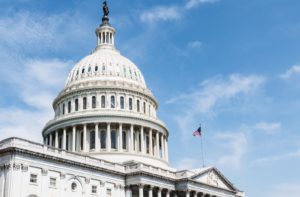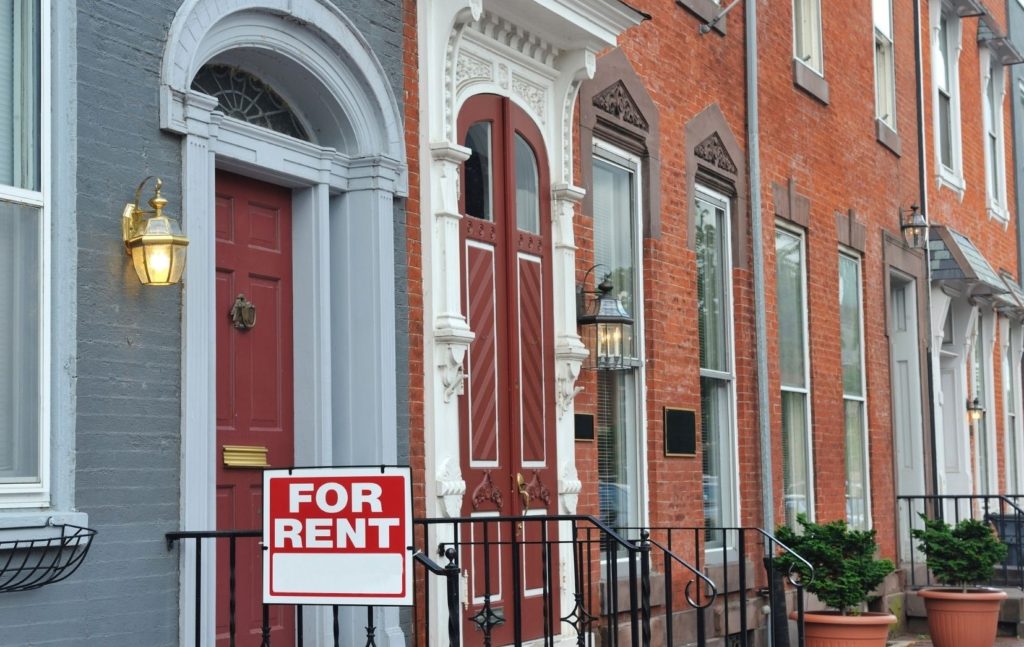The Build Back Better Act Will Do Much to Improve Marylanders’ Lives; It’s Time for the Senate to Finish the Job
 Friday’s passage of President Biden’s signature Build Back Better Act in the U.S. Representatives was a major step towards increased opportunities for Marylanders. The bill would ensure families with children can afford the basics, make health care more affordable, take steps to address the climate crisis, and make our economy more just and inclusive. And it would create more than 2 million jobs nationwide in the process. The Senate must now finish the job and put the bill on President Biden’s desk.
Friday’s passage of President Biden’s signature Build Back Better Act in the U.S. Representatives was a major step towards increased opportunities for Marylanders. The bill would ensure families with children can afford the basics, make health care more affordable, take steps to address the climate crisis, and make our economy more just and inclusive. And it would create more than 2 million jobs nationwide in the process. The Senate must now finish the job and put the bill on President Biden’s desk.
Build Back Better Invests in Children
- The bill extends the expansion of the Child Tax Credit (CTC) under the American Rescue Plan for one year, ensuring families continue receiving monthly checks ($300 each for young children, $250 for older children) to pay for necessities. This expansion benefits 1.1 million Maryland children—five out of six children in the state—and reduces child poverty by one-third.
- The bill also makes the CTC fully refundable forever, meaning that the families with the greatest needs will no longer receive partial benefits or be locked out entirely. This structural fix will benefit about 350,000 children in Maryland, three-quarters of whom are children of color.
- The bill guarantees affordable child care for the vast majority of Maryland children up to five years old, including free child care for many children in low-and moderate-income families (those with family income less than about $97,000 for a four-person family, or $66,000 for a two-person family). This assistance would become available to many children essentially right away, while benefits for wealthier families would phase in through 2025.
- The bill guarantees free, high-quality prekindergarten for every three- and four-year-old child nationwide. Like the bill’s child care provision, the service would be funded through federal-state partnerships. However, for both services the federal government would provide the bulk of funding, with no arbitrary cap.
- The bill would help to ensure children get enough to eat both during the school year and in the summer. The bill would expand the community eligibility option that allows high-poverty schools to serve all children free lunch, enabling more schools to join and for the first time creating a statewide community eligibility option. In the summer, the bill provides $65 per month in grocery benefits for children who receive free or reduced-price lunch at school, ensuring that they don’t go hungry when school is out.
- The bill invests in higher education so that today’s children can afford to go to college tomorrow. This includes a $550 increase to the maximum Pell Grant benefit and increased funding for HBCUs and other minority-serving institutions.
- The House version of the bill provides four weeks of paid family and medical leave, ensuring for the first time that all American workers can take time off to bond with a new child without risking their livelihood.
Build Back Better Invests in Lifelong Health
- The bill strengthens the health insurance marketplaces created under the Affordable Care Act by improving premium assistance and allowing more workers to access the exchanges if their employers offer only unaffordable insurance options. While these improvements would have the biggest impacts in states that refused to expand Medicaid, the bill is estimated to enable 34,000 Marylanders to gain health coverage and lower insurance costs for 53,000 Marylanders.
- The bill would make the Children’s Health Insurance Program permanent, giving families peace of mind that politics will never put their children’s health care at risk again. The bill also requires all states to grant 12-month CHIP eligibility, ensuring that a temporary income boost for parents doesn’t cost their children’s health insurance. Maryland is one of 23 states that do not currently guarantee 12-month eligibility.
- The bill temporarily increases the federal share of Medicaid expansion costs from 90% to 93%, likely saving the state about $80 million per year.
- The bill would for the first time add hearing benefits to Medicare, ensuring that aging Marylanders can afford hearing aids and other hearing-related health care.
- The bill includes multiple measures to make prescription drugs more affordable, including capping the out-of-pocket cost of insulin at $35 per month, allowing Medicare to negotiate on the price of certain medications, penalizing pharmaceutical companies for large annual price increases, and guaranteeing that no one insured through Medicare has to spend more than $2,000 per year on prescription drugs (adjusted for inflation beginning in 2025). Nearly 18,000 Marylanders insured through Medicare spent more than $2,000 on prescriptions in 2019, and the cap would save them an average of about $1,100 per year.
- The bill boosts federal investments in home- and community-based long-term care, enabling more seniors and Marylanders with disabilities to get the health and personal care services they need while living at home. As of 2018, 31,000 Marylanders were on a wait list for in-home care.
- The bill’s family and medical leave provision would guarantee four weeks of paid time off for workers who need to recover from a major illness or injury, or need to care for a sick family member.
Build Back Better Invests in Affordable Housing
- The bill invests $26 billion in housing assistance, allowing 11,000 Marylanders to get help paying rent. This includes 4,200 children, 2,400 people with disabilities, and 1,300 seniors. Two-thirds of the Marylanders likely to benefit from this expansion are Black and 80% are people of color.
- The bill also includes major investments in building new affordable housing and renovating aging public housing.
- The bill includes new investments in home safety, such as replacing lead pipes, lead paint, and other environmental hazards in the home.
Build Back Better Invests in Sustainable, Broadly Shared Prosperity
- The bill is estimated to create 2.3 million jobs nationwide, both directly by investments in child care, prekindergarten, long-term care, and affordable housing development, and indirectly by putting money in the pockets of working families who will spend it in their local economies.
- The bill’s new investments in child care, prekindergarten, and long-term care come with standards to ensure that these jobs pay a decent wage. This is essential both for the sake of care workers and their families and to make sure that these occupations are attractive enough to maintain a sufficient workforce.
- The bill strengthens penalties for employers that break the law by paying less than minimum wage or retaliating against workers for joining together in a union. Current penalties are often so low that many employers consider them an acceptable cost in order to keep wages down or refuse to negotiate with workers.
- The bill temporarily extends an expansion of the Earned Income Tax Credit under the American Rescue Plan, boosting incomes for low-wage workers who don’t claim child dependents on their taxes.
- The bill creates a new temporary legal status for immigrants who have been in the United States for at least 10 years. This would create peace of mind for millions of families, prevent employers from using the threat of deportation to control workers, and enable families to access necessities such as health insurance—a major benefit, as Marylanders born outside the United States are today more likely to be uninsured than any other group. However, this provision faces an uncertain future in the Senate due to the different rules the chambers operate under.
- The bill includes historic new investments in fighting climate change, such as incentives for clean energy, improved transit service in underinvested neighborhoods, and protective infrastructure for low-lying coastal areas.
- The bill would strengthen productivity and protect against excessive inflation in the long term. The bill invests $5 billion in manufacturing supply chain resilience and will help parents enter and stay in the labor force through its investments in paid leave, child care, and prekindergarten. Investments in higher education and workforce development will also strengthen the future supply of skilled workers.
Build Back Better is Fiscally Responsible
- The bill is fully paid for. It saves billions from lower prescription drug prices, taxes multimillionaires and profitable corporations, and invests in enforcement to prevent the wealthy from cheating on their taxes.
- In the short term, the bill will not add to inflation because all new spending is offset by savings and revenue. In the long-term, it will help protect against price increases by strengthening the workforce, improving productivity, and protecting against economically damaging climate disruptions.
It’s Time to Finish the Job
After months of negotiation, nearly two years of pandemic-induced tumult, decades of weak wage growth, and centuries of racial injustice, Marylanders can’t wait any longer. The Senate must swiftly take up the bill, pass it, and put it on President Biden’s desk.
The version of the Build Back Better Act passed by the House is a major step forward, but it is also far weaker than President Biden’s original proposal. The Senate must not weaken it further—whether by stripping out paid leave or immigration reform, or by eliminating or weakening other provisions.
The Build Back Better Act should be seen as one step toward more far-reaching reforms. Once the Build Back Better Act is law, Congress should improve the bill by extending paid leave beyond four weeks, strengthening investments in transit and clean energy, and making temporary provisions of the current bill permanent.


